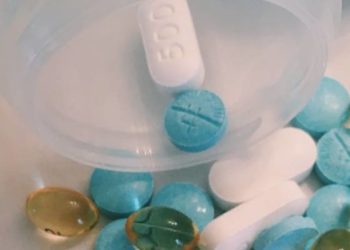Vibration may have role in treating neonatal opioid withdrawal syndrome
1. In a randomized controlled trial assessing the addition of a vibrating crib to standard therapy for opioid exposure in neonates, the use of vibration was not associated with a significant reduction in the number of infants who went on to require morphine treatment.
2. A significant dose-response effect of vibration therapy was observed, with each hour per day of vibration associated with a 12% reduction in the odds of requiring morphine treatment.
Evidence Rating Level: 1 (Excellent)
Study Rundown: Neonatal opioid withdrawal syndrome (NOWS) due to prenatal exposure to opioids is associated with a variety of neurological and gastrointestinal symptoms. NOWS is often managed with morphine, which can negatively impact development and typically requires admission to a neonatal intensive care unit (NICU). Past studies have suggested that mechanical stimulation, particularly low-level stochastic, or random, vibration, may help prevent or treat NOWS. This randomized trial aimed to assess a vibrating crib in avoiding the need for opioid therapy in infants exposed to opioids. Among a total of 181 infants randomized to receive standard therapy with or without the addition of an oscillating crib mattress, 33.1% required NICU transfer and morphine treatment. This rate did not significantly differ for infants receiving the intervention. However, the duration of vibration therapy was significantly associated with lower odds of requiring morphine — 12% per hour per day of vibration. Among the subgroup completing NOWS treatment within 3 weeks, though not among the entire study population, infants receiving vibration required significantly less morphine and for a shorter duration. This trial provides evidence of a real, though modest, effect of stochastic vibration in improving outcomes for neonates exposed to opioids. A new addition to the bundle of nonpharmacologic treatments used to minimize morphine use, including holding by caregivers, would be welcome, but the improvements shown here must be balanced with the difficulty of broadly implementing the custom vibrating crib setup used in this study.
Click to read the study in JAMA Pediatrics
Relevant Reading: Neonatal opioid withdrawal syndrome
In-Depth [randomized controlled trial]: Neonates born at or after 37 weeks gestation after prenatal exposure to opioids at two tertiary centers between 2017 and 2020 were included. Opioid exposure was confirmed based on maternal medical records or either meconium or neonatal urine toxicology. Infants with significant congenital anomalies or severe birth complications were excluded. Infants in the treatment group had their crib mattresses replaced with customized mattresses programmed to vibrate stochastically for 3 hours on then 3 hours off, whether or not the infant was in the crib. The need for NICU transfer and treatment using morphine was determined based on 3 consecutive modified Finnegan scores of 8 or higher or 2 of 12 or higher. Intention-to-treat analysis was used. Analysis using a regression-based model of the effect of vibration duration on morphine treatment indicated that for infants receiving an average of 6 hours per day of vibration therapy, the odds of morphine therapy were reduced by 50%. Among the subgroup of infants treated in less than 3 weeks, those treated with vibration received morphine for 26% lower duration [95% confidence interval (CI) -0.47 to -0.04) and 1.76 mg/kg less morphine (95% CI -3.02 to -0.50).
Image: PD
©2023 2 Minute Medicine, Inc. All rights reserved. No works may be reproduced without expressed written consent from 2 Minute Medicine, Inc. Inquire about licensing here. No article should be construed as medical advice and is not intended as such by the authors or by 2 Minute Medicine, Inc.







